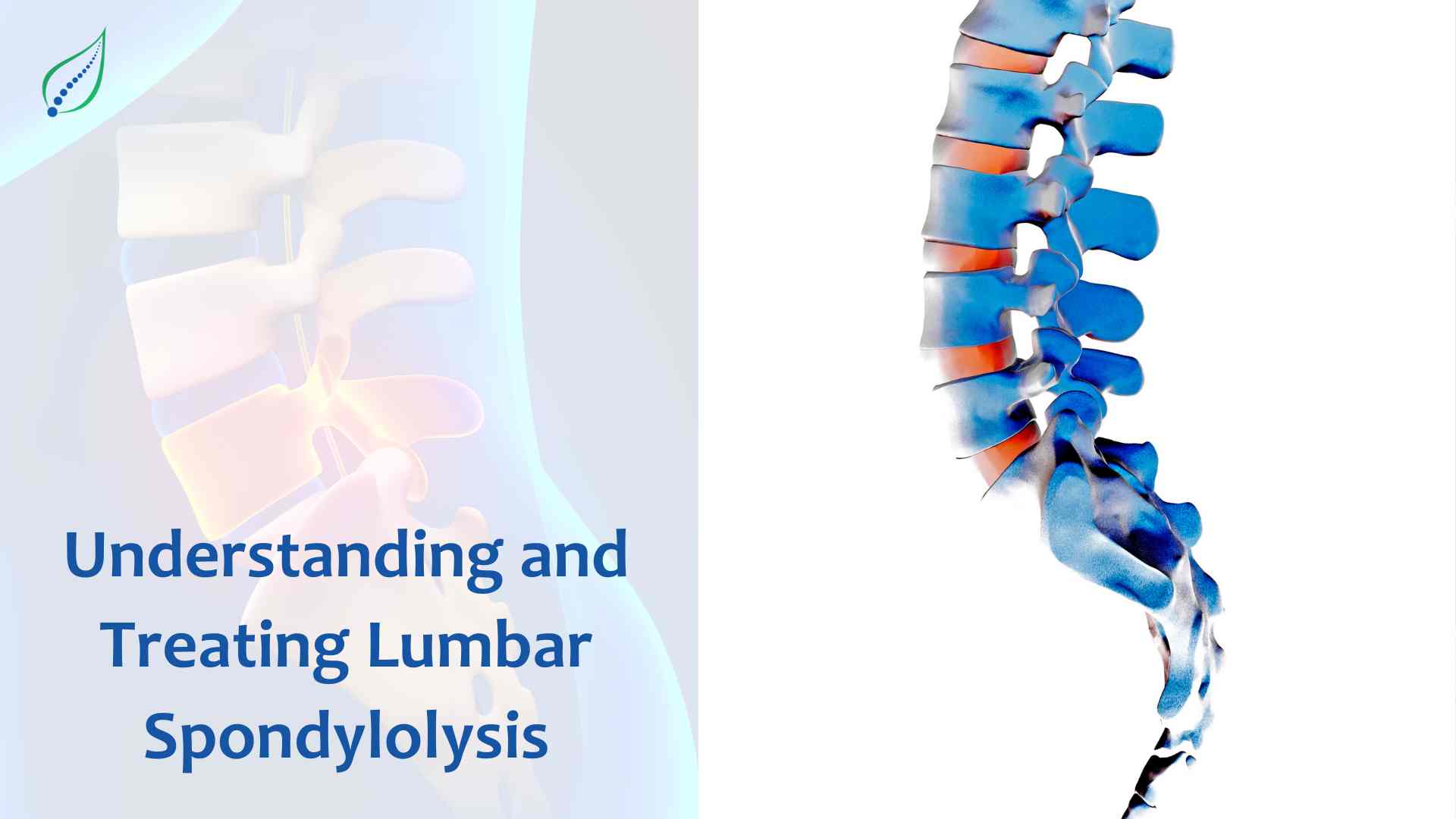Understanding and Treating Lumbar Spondylolysis
Lumbar spondylolysis is a crack or stress fracture in the vertebrae of the lower back. This common cause of low back pain often affects active adolescents and young adults, especially athletes who participate in sports involving repeatted hyperextension and rotation of the spine. If you’ve been diagnosed with spondylolysis or have symptoms of low back pain and stiffness, read on to learn about the anatomy, causes, symptoms, diagnosis and nonsurgical treatment options for this condition.
Anatomy of the Lumbar Spine
The lumbar spine consists of five vertebrae stacked upon one another in the lower back. These vertebrae connect to each other through facet joints and are separated by discs which act as shock absorbers. Each vertebra has a hole for the spinal canal as well as a “neural arch” behind which connect two pedicle bones and the lamina.
Spondylolysis occurs when a defect forms within the neural arch, usually at the point where the pars interarticularis connects the lamina to the pedicle. This creates a fracture between the vertebral body and facet joints. If the defect results in slippage of one vertebra over another, it is called spondylolisthesis.
Causes and Risk Factors
There are several factors that can contribute to the development of spondylolysis:
- Repeated hyperextension - Sports like gymnastics, football, weight lifting and diving require constant backward arching which can overstretch and weaken the pars interarticularis.
- Genetics - Some people are just born with thinner, elongated pars interarticularis that are prone to fracture.
- Bone structure - Having scoliosis or other abnormalities of the vertebrae adds biomechanical stress to the lower back.
- Low bone density - Weak, osteoporotic bones have increased risk of fracture and stress reactions.
- Growth spurts - Rapid growth in adolescence can place too much tension on the neural arch.
Symptoms of Spondylolysis
-
Lower back pain that worsens with extension or rotation. Pain usually centred low across the back above the sacrum.
- Stiffness and spasms of the paraspinal muscles surrounding the fracture.
- Generalized soreness and achiness in the low back, hips and thighs.
- Pain or tightness that increases with activity but eases with rest.
- Radiating pain into the buttocks or thighs in some cases.
- Limited range of motion - decreased ability to extend and twist the lower spine.
Diagnosing Spondylolysis
If spondylolysis is suspected based on symptoms and risk factors, the physician will order imaging tests to confirm the diagnosis and locate the fracture. These may include:
- X-rays - Reveal fractures through the pars interarticularis. Oblique views provide the best visualization. Flexion and extension of LS spine view gives idea about fracture progression.
- CT scan - Clearly shows the defect in the neural arch in fine detail.
- Bone scan - Highlights areas of increased bone activity from fracture healing.
- MRI - Provides images of the soft tissue and nerves to rule out disc issues.
Treatment Approaches
The good news is most spondylolysis fractures, especially when caught early, can heal through conservative treatment methods:
- Activity modification - Avoiding sports and movements like hyperextension that aggravate the fracture is key.
- Rest - Take time off aggravating activities to allow fracture healing.
- NSAIDs - Anti-inflammatory medication helps relieve pain and swelling.
- Brace - Wearing a back brace limits spine motion allowing fracture to heal.
- Physical therapy - Strengthening core muscles provides stability and takes pressure off the defect.
- Posture training - Learning proper low back alignment reduces biomechanical stress.
- Ice and heat therapy - Alternating these modalities relaxes muscles and improves blood flow.
- Electrical stimulation - Mild electrical stimulation like IFT and TENS therapy promotes pain reduction.
- Ultrasound - Applying ultrasound waves increases blood flow to fracture.
Recovery Timeline
With nonsurgical treatment, most young patients fully recover from spondylolysis within 6-12 weeks. Younger adolescents may only need 2-4 weeks in a brace since their bones have greater healing potential. Older patients generally recover in 3-6 months. Pain and stiffness should gradually improve but activity is restricted over this period to allow the fracture to heal. Physical therapy helps strengthen the core muscles to stabilize and protect the spine. If pain persists beyond 6 months of conservative treatment, a specialist should be consulted about next steps.
Preventing Reinjury
Some tips to prevent recurrence of spondylolysis or low back injuries include:
- Build core and low back strength with regular exercise.
- Maintain proper posture and spinal alignment.
- Avoid excessive lumbar hyperextension and rotation.
- Lift objects using proper technique - bend knees, keep back straight.
- Maintain ideal body weight to avoid overloading the spine.
- Take breaks when doing repetitive activities involving the low back.
Final takeaway
Spondylolysis is a common cause of back pain in active young people but often responds well to nonsurgical fracture treatment if addressed promptly. With a period of rest, bracing and focused physical therapy, the vertebral defect can heal allowing a safe return to activity.

_1744793045.png)
_1743751136.png)
_1738219992.png)
